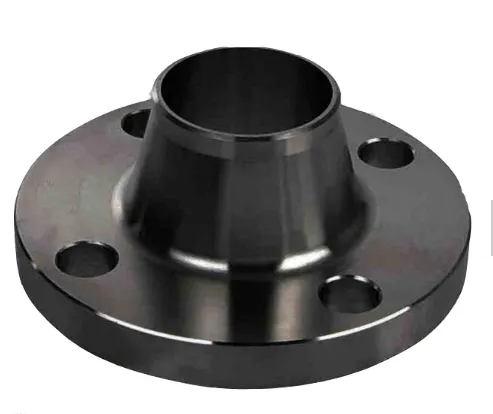-
Cangzhou Yulong Steel Co., Ltd.
-
Phone:
+86 13303177267 -
Email:
admin@ylsteelfittings.com
- English
- Arabic
- Italian
- Spanish
- Portuguese
- German
- kazakh
- Persian
- Greek
- French
- Russian
- Polish
- Thai
- Indonesian
- Vietnamese
- Zulu
- Korean
- Uzbek
- Hindi
- Serbian
- Malay
- Ukrainian
- Gujarati
- Haitian Creole
- hausa
- hawaiian
- Hebrew
- Miao
- Hungarian
- Icelandic
- igbo
- irish
- Japanese
- Javanese
- Kannada
- Khmer
- Rwandese
- Afrikaans
- Albanian
- Amharic
- Armenian
- Azerbaijani
- Basque
- Belarusian
- Bengali
- Bosnian
- Bulgarian
- Catalan
- Cebuano
- China
- China (Taiwan)
- Corsican
- Croatian
- Czech
- Danish
- Esperanto
- Estonian
- Finnish
- Frisian
- Galician
- Georgian
- Kurdish
- Kyrgyz
- Lao
- Latin
- Latvian
- Lithuanian
- Luxembourgish
- Macedonian
- Malgashi
- Malayalam
- Maltese
- Maori
- Marathi
- Mongolian
- Myanmar
- Nepali
- Norwegian
- Norwegian
- Occitan
- Pashto
- Dutch
- Punjabi
- Romanian
- Samoan
- Scottish Gaelic
- Sesotho
- Shona
- Sindhi
- Sinhala
- Slovak
- Slovenian
- Somali
- Sundanese
- Swahili
- Swedish
- Tagalog
- Tajik
- Tamil
- Tatar
- Telugu
- Turkish
- Turkmen
- Urdu
- Uighur
- Welsh
- Bantu
- Yiddish
- Yoruba

Oct . 04, 2024 04:22 Back to list
various types of flanges
Understanding Various Types of Flanges
Flanges are critical components used in piping systems, providing a mechanical means to connect pipes, valves, pumps, and other equipment. They ensure a reliable, leak-proof seal that is essential for maintaining the integrity of various systems. There are several types of flanges, each designed to suit specific applications and environments. This article explores the most common types of flanges, their characteristics, and applications.
1. Weld Neck Flanges
Weld neck flanges are known for their long tapered neck, which allows for a strong and smooth transition between the pipe and the flange. This design minimizes stress concentration and is ideal for high-pressure applications. Weld neck flanges are typically used in critical piping systems in industries such as oil and gas, chemical processing, and power generation.
2. Slip-On Flanges
Slip-on flanges are one of the most commonly used flange types due to their simplicity and ease of installation. They are designed to slide onto the end of a pipe, and then are welded in place. This type of flange is suitable for applications with low to moderate pressures. However, it is less favorable in high-pressure environments because they are more susceptible to leaks compared to weld neck flanges.
Blind flanges serve a specific purpose they are used to close off the ends of piping systems. They do not have a hole in the center, making them ideal for creating a seal in systems where maintenance or future access is not required. Blind flanges are particularly useful in pressure systems and are often used in applications involving high pressure, such as in pipelines carrying gases and liquids.
various types of flanges

4. Threaded Flanges
Threaded flanges have internal threads that allow them to be screwed onto the pipe without the need for welding. This feature makes them easy to install and a good option for applications where welding is not feasible. However, threaded flanges are generally not recommended for high-pressure systems due to the risk of leaks at the threaded joint.
5. Socket Weld Flanges
Socket weld flanges are similar to slip-on flanges but are designed to have the pipe inserted into a recessed area of the flange. They are welded around the top of the flange and are suitable for high-pressure applications owing to their strong joint. Socket weld flanges are commonly used in small diameter high-pressure piping systems.
6. Lap Joint Flanges
Lap joint flanges consist of two pieces a backing flange and a loose slip-on flange. They are designed for use with a stub end (a short pipe section). This type of flange allows for easy alignment and is often used in applications where frequent dismantling of the piping system is needed.
Conclusion
In conclusion, the choice of flange type depends on various factors, including the pressure rating of the system, the materials involved, maintenance requirements, and the specific application. Understanding the different types of flanges and their characteristics is crucial for engineers and technicians in order to ensure safe and efficient piping operations. Whether it's for a chemical plant, a water treatment facility, or an oil rig, selecting the right flange type can significantly impact the reliability and longevity of the entire system.
Latest news
-
ANSI 150P SS304 SO FLANGE
NewsFeb.14,2025
-
ASTM A333GR6 STEEL PIPE
NewsJan.20,2025
-
ANSI B16.5 WELDING NECK FLANGE
NewsJan.15,2026
-
ANSI B16.5 SLIP-ON FLANGE
NewsApr.19,2024
-
SABS 1123 FLANGE
NewsJan.15,2025
-
DIN86044 PLATE FLANGE
NewsApr.19,2024
-
DIN2527 BLIND FLANGE
NewsApr.12,2024
-
JIS B2311 Butt-Welding Fittings LR/SR 45°/90° /180°Seamless/Weld
NewsApr.23,2024











